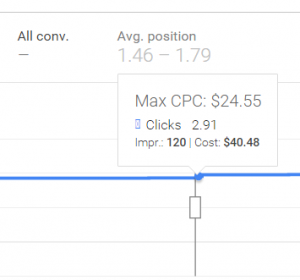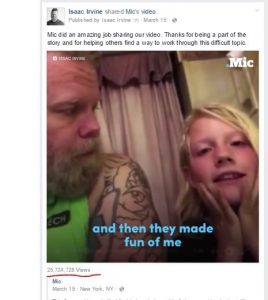
Have you ever wondered how to determine exactly who your Buyer Personas are to be as persuasive as possible with your marketing material? In this article, you will find out exactly what method to follow to get your buyer personas right the first time around. On the 14th of October, we did an interview with Adele Revella from the Buyer Persona Institute. What follows here is a summary of what you need from your buyers and how to get that knowledge from them to set up your Buyer Personas.
Buyer’s personas revisited
Mostly when people think of buyer personas, they boil it down to demographics. In what age group are your buyers, what are their hobbies, etc.?
 There is nothing wrong with getting this information, and it is critical to understand this when you are choosing your niche. But this can be done through intuition and some common sense.
There is nothing wrong with getting this information, and it is critical to understand this when you are choosing your niche. But this can be done through intuition and some common sense.
According to Adele, you need to get way deeper than demographics to get to the core and see real results from your Personas. To be persuasive, you also need the psychographics of your buyer.
What I really want a buyer persona to be about is some very specific insight about how, when, and why your target audience chooses a product like yours…..that’s the job we’re in. We’re marketers, and we’re companies selling things. We’ve got to know what it’s going to take to persuade you to choose what we are selling. That’s got to be our primary goal. – Adele Revella; interview at Groove Digital Marketing.
Demographics is the who; psychographics are the how, when, and why
To have a successful marketing campaign, you need both the demographics and the psychographics of the buyer. The psychographics are going to tell you the inner workings of your buyer’s mind before the sale.
When you have that information, you can start fine tuning your marketing to be much more influential. Now that you know what information you need from the buyer we are going into specifics on how to get it.
The intimate interview
The way to get the psychographic information is by scheduling an interview with ten of your clients or would be clients who purchased from a competitor (five of each would be a good idea). It is not a good idea to assign this task to your sales team because the customer’s guard will go up.
Adele lists five key insights that you are looking to gain from this interview, and you must use these to structure the framework of your interview. It is important that it shouldn’t sound scripted; it must be a natural conversation.
The Five Key Insights
- The Priority Initiative Insight: What is the reason for why some buyers take action and others don’t. When looking at it from a B2B perspective; what is happening in the buyer’s business or organization that causes them to spend money to alleviate a particular problem?
- The Success Factor Insight: This is the positive outcome or benefits that the buyer says and believes that they are going to receive by buying this product or service.
- The Perceived Barrier Insight: What are the buyer’s objections? This tells you why your buyer isn’t spending the money on your product or service to alleviate the particular problem you can solve for them. It is important to understand that sometimes the perceived barrier has already been addressed by your company but the buyer may not know this. If that is the case, you need to make a greater effort to make it clear and change their perception.
- The Decision Criteria: What features are the buyer attracted to that distinguishes you from your competitors in the eye of the buyer?
- The Buyer’s Journey: This is the resources and people that are consulted as the buyer goes through the decision of the buying process.
Art of structuring your interview
“Take me back to the day when you first decided to look for [x product].”
You can use these exact words to start the interview.
The buyer shouldn’t know that it is your agenda to find these five key insights insights. The key here is that you want them to go into story mode, so you want to ask your questions intelligently. Let them spend five to ten minutes on each insight. Here are examples of specific questions you can ask:
- Tell me how you started to evaluate your options.
- Did you look on the Internet?
- What did you hope to find in the websites that you visited?
- Was there anything that was difficult to find?
- What was your criteria at the end of the web search to exclude or include any candidates from your consideration?
- What was your next step?
- How did you make your decision?
- What was the process from there?
- Did you call the sales team?
- Did they send someone to you?
- Did you take a trial or demo?
- Who tested the trial or demo and what were their findings?
In Closing
The insights you stand to gain from these interviews are absolute gold, and this can become the foundation for much of your marketing and sales structure. Adele recommends that you continue to do one interview per month on an ongoing basis.
If you would like more information on how to create a Buyer Persona template, please go here. For some additional resources from the Buyer Persona Institute, please go to their resources page.
Try to take some action immediately from this information to enhance a system or process in your company and comment in our comment section below. Only knowledge that leads to action equals power.
(266)
Report Post



